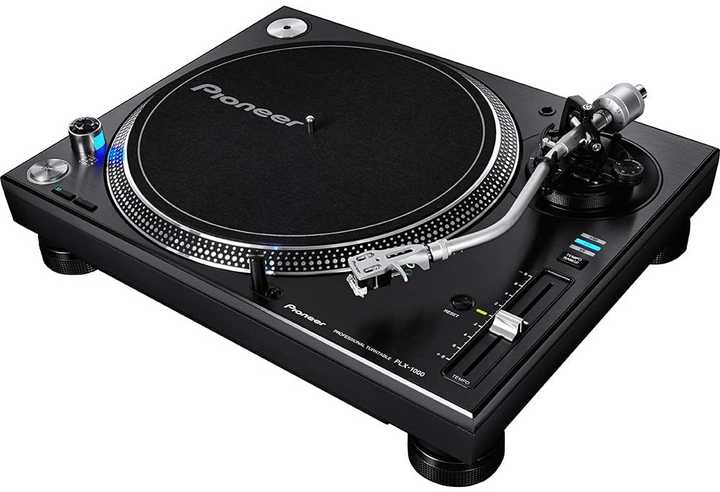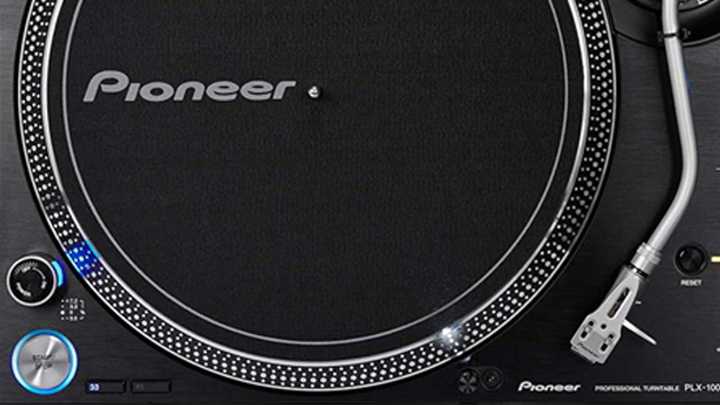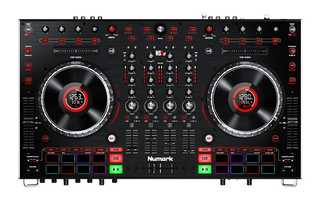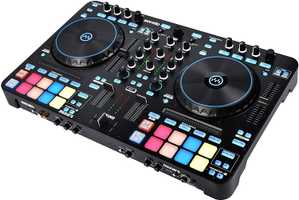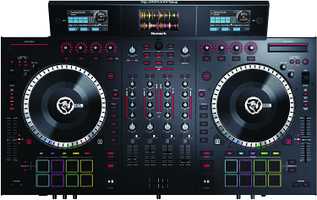Pioneer PLX 1000 VS Stanton ST 150 DJ Turntable Reviews
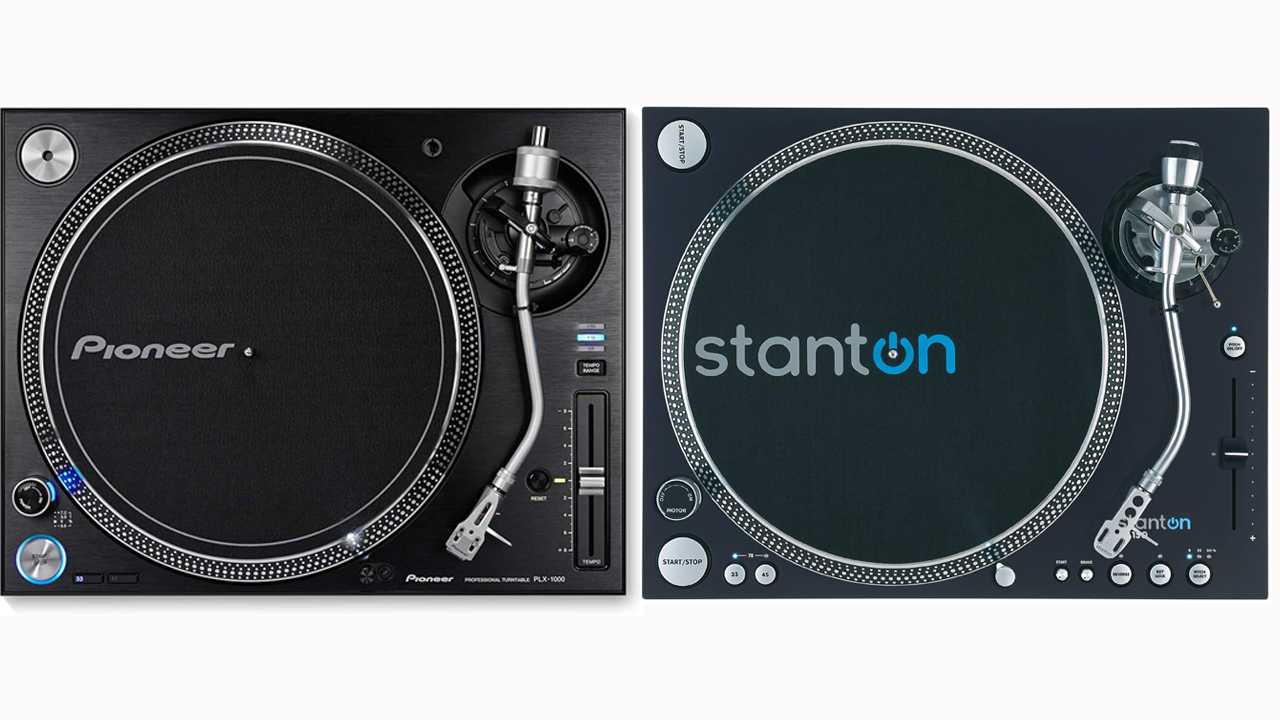
I’m here to give you guys a rundown review and a comparison of the Pioneer PLX 1000 professional vinyl analog turntable. So this is a new take on a tried and true design. Basically, we have the DNA from a super OEM turntable.
Specifications:
SUPER OEM TURNTABLE
It’s the hand-picked design that recently came out maybe 10 years ago. The different turntables have the same underpinnings and the same DNA, the same motor, and the same strong lasting gear.
Like the Reloop RP-6000 the Reloop RP-7000, the Reloop 8000 also the Stanton T120S. And there’s also the iconic now Stanton ST-150 or STR8-150 that also had that same overall super OEM turntable DNA.
So the pioneer brand takes that further. Or shall I say a little bit lesser by just trimming it down and making it almost a carbon copy of what the Techniques 1200 used to be with the minimalistic features of just starting and stopping the on/off power switch?
They don’t have any of these super OEM extra features like the start and stop brake adjustment and different features like an onboard preamp that will turn the phono o level into a line-level inside of the unit.
So the pioneer does not have all of these features, but it has a no-frills, nice basic type setup with a really strong motor or really good tonearm and a really solid build quality.
FIRST IMPRESSIONS
My first impressions of the Pioneer PLX 1000 are very good. You have a nice brushed metal top face. This is very reminiscent of the pioneer CDJ lineup. It really, really looks nice.
It’s a really heavy turntable. The side and the underneath are all plastic. Doesn’t have that rubberized coating like some of the other super OEM turntables out there. But it does have a nice reassuring feel and has nice thick wide feet on it.
So it’s very good for dampening and for causing less vibration than any other normal setup would be.
THE PLX 1000 PLATTER
So you also have the solid platter underneath against super going in stuff here. Very, very strong motor underneath. Same motor that’s found in the other super OEM lineup.
And the turntable comes with a nice flip mat. So you get a front slip mat. You also get the rubber one and you also have a nice sturdy start/stop button over here.
Again, a similar feel and layout to the Techniques when you’re looking at the corners of the unit. So you have the start and stop button that feels really nice, really reassuring. You have the somewhat recessed power on-off switch, then you have the 33 and the 45 buttons.
You have a pop-up target light, which is very nice to you that has a LED inside. So it probably won’t burn out you as quickly as the Techniques used to.
But it’s not replaceable like the Super OEM. We’ll get to the comparison shortly.
THE CARTRIDGE
You have your headshell that comes with and you have to mount your cartridge or you have to get a cartridge-needle combo such as the Concorde Addition Ortofon.
TONEARM
Then you have a nice solid and sturdy tonearm assembly. The tonearm assembly is a mixture of this super OEM tonearm and something new from Pioneer.
They have most of the componentry from the super OEM model, but they do have more dampening material and insulation inside of the tonearm for better sound quality.
Also, have a different ring on it. So where you can adjust the height and everything to your specs and to your needs. They also have a nice counterweight adjustment, a nice anticipate adjustment. Everything is really nice here.
Really easy to dial in all your settings so you don’t have any skip issues with your toner and your needle.
PICH/TEMPO
Next, you have the pitch tempo range button so you can change the range between +/- 8% +/- 16%, and +/- 50%. It's LED so it lights up to tell you which range you’re currently in.
PITCH SLIDER
You have the pitch slider that is nice and smooth. No 0 end dead or anything like that. So it’s a nice smooth throw all the way through. It’s all metal and feels really good. And you also have a reset button to bring it back to zero no matter where you’re at in the mix.
PIONEER PLX 1000 VS STANTON ST 150
We’ll do a quick comparison and we’ll let you guys see all the differences between the Pioneer PLX and another flagship turntable the Stanton ST-150.
The Stanton ST 150 has been out on the block for about 10 years now. So that’s kind of a tried and true design in terms of turntables.
The super OEM DNA it’s inside of both the ST 150 and the PLX 1000, meaning they both have the same strong super sturdy motor and the same basic underpinnings that make it a great turntable from the start.
THE START/STOP BUTTONS PLACEMENTS
So in comparison, the first thing you’ll notice is there is a single start and stop button on the pioneer and there are the dual start and stop buttons on most super OEM models both in the lower and upper corners.
That way you can turn it to battle style and you’ll have both of your starts and stop buttons near the bottom so that you can use them for different performance features.
On the Pioneer PLX, you’ll notice they have the 45 adapters so you can play the 45 records if you have them, or you can remove that so you can put them in your dicer in order to have MIDI control. So a lot of people actually like using dice and they can put them here. But on the super OEM other models, you usually can’t.
BUILD QUALITY COMPARISON
Next, you have a nice brushed metal finish.
It’s very reminiscent of the pioneer CDJ the lineup of CD players or multimedia players. And it has a really nice brushed look. The look on the ST 150 is usually like a midnight blue.
Nothing special. And sometimes I’ve heard reports of where it does chip a little bit easier.
The finish on the pioneer PLX does look a little bit better and a little bit nicer overall, in my opinion.
PLATER COMPARISON
Up next, you have the platter. The Platters are basically the same except the platter on PLX 1000 is sunken in a little bit so it’s more reminiscent of the Technique 1200. Whereas the platter on most other superior turntables is raised slightly above the top of the deck.
33 AND 45 BUTTONS
You have 33 and 45 buttons. They’re rectangular and they just have a nice click to them. On the Stanton and other super OEM models, they’re round and they also have a nice put to them and they have indicators so that you see what speed you’re in at that time.
You have a motor on-off switch on ST 150. Same on PLX 1000. This one is more needled and has alike a grip surface to it.
PITCH SLIDER
You have your pitch, slider, and pitch section. On the PLX 1000, you have a nice medal and really sturdy tempo slider feels really, really good. There’s no center click to it and a quick reset button and then you have your tempo range here for 15, 16, and 8 percent.
On the Stanton ST 150, you have a reverse function. You have a key lock function. You have your pitch select of 8%, 25%, and 50%, and then you have a plastic sort of wobbly feeling pitch slider.
There’s nothing wrong with it. You can do that just fine to alter your pitch, but it doesn’t feel as good as what was on the Techniques or what’s here on the Pioneer PLX 1000. Up top, you have a pitch lock button to bring the pitch back to absolute zero. If you need to.
BREAK KNOBS
They have start and stop break adjustment knobs.
So whenever you press that start and stop button, you can easily turn the knob to change the way the motor starts or the way the motor slows down by adjusting these knobs. A really cool feature to have.
But the pioneer PLX 1000 being a Techniques clone or a similar layout to the Techniques didn’t want any of that extra bells and whistles features. So you’re getting a no-frills type of setup here on the PLX 1000.
POP-UP LIGHTS
Next, your pop-up light and your target light on the Stanton ST 150 and most other super OEM turntables is a removable light that you can easily replace because there are always other ones found on eBay or wherever you need to go to find them. Over here on the PLX, you have a pop-up that is similar to what was on the technique 1200 turntable.
Is an LED inside so it’s probably not going to go bad anytime soon, but it’s just a different design. They both work well.
TONEARMS
The tonearm assembly. You’ll notice that a lot of the tonearm assembly is actually the same from here to the PLX 1000.
But if you look a little closer, they have a different style of counterweight. And they also have a sunken-in look to the actual height adjustment band that’s there and a bigger anticipate adjustment knob.
That’s more reminiscent of the Techniques, type, design, and flavor. Most other super OEM hand-pined designs have this looking setup with a raised above-the-lid type of height adjustment and also a smaller anticipate adjustment knob.
And they usually have the same type of weight. These are on all the Reloop turntables and all the other Audio Technica’s and every other super OEM I’ve seen.
So Pioneer has strayed a bit away from the design of the tonearm and the tonearm assembly of the traditional hand-picked superbly turntables. They also have a bit more material in their tonearm for dampening and for a higher quality sound altogether.
BACK CONNECTIONS
On the back. The pioneer PLX 1000 is very, very simple, very close to what the Techniques had to offer, except it has removable phono RCA. So you can use any RCA at all that you need. It’s far recessed in there, so you don’t really need any special type of 45 or 90-degree adapter RCA cables.
You can just put any straight RCA cable in. It works just fine. You have your ground because it’s not internally grounded and this is just phone low-level input. There’s no line-level or anything like that Kensington Lock and regular power.
Then we will move over to the Stanton. We have the same power over there to the right. And then we have digital out here. We also have a phone out and line select lever switch. That way you can select whether you want this to use the internal preamp or not.
And then you have internal grounding as well. So there’s no ground post. And then, of course, you have your removable RCA cables.
CONCLUSIONS
So in conclusion, the Pioneer PLX 1000 is a very, very formidable turntable.
It’s a nice replacement or a nice first deejay turntable for anyone who wants a really high-quality turntable.
They want this very familiar Technique 1200 layout and feel they don’t want all the other bells and whistles that come with a turntable. Such a start and stop differences and little things like that that made us get in the way of your deejay performance instead of enhancing it.
It has great build quality and construction. Nice. Really, really heavy, solid, sturdy design. You do all your scratching on your back doing anything that a professional turntable can do.
This is really built for it and has a very, very strong motor. And it had a solid tonearm assembly and a solid platter. That way, you know, you’re not going to get any skips, any wobbles, or any shakes.
DOWNSIDES
On the downside this Pioneer PLX 1000 is a turntable with only the base features, meaning you’re not getting all those other additional features that some of the other super OEM turntables have.
Like we showed you the quick comparison, but it does have a nice, great set of great base features that will definitely get you through the day. And the other negative is that it has a high price point.
You are getting only the base features and its price is at the top of the super OEM ladder and about $700. So comparatively you can get a Reloop RP 8000 for almost the same price and that has MIDI buttons.
It also has start and stop adjustment knobs and a lot of other features. But again, if you want no-frills, a nice, easy way to transition from a Technique 12000 to another turntable, the Pioneer PLX 1000 is an excellent turntable for you.
Pioneer PLX 1000 Summary
Pros:
Familiar Technics 1200 Layout and Feel
Great Build Quality and Construction
Very Strong Motor
Solid Tonearm Assembly
Cons:
Basic Turntable Features
Hight Price

